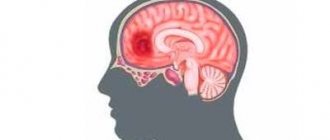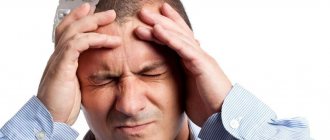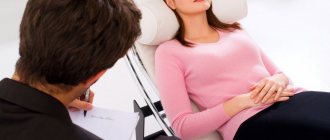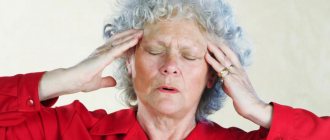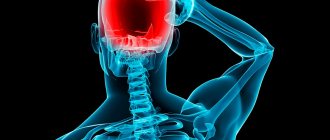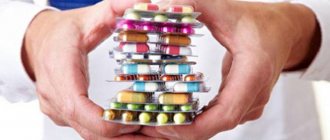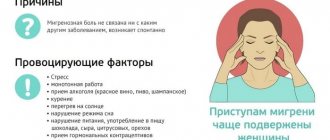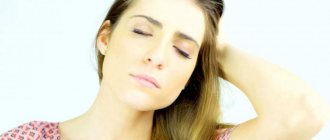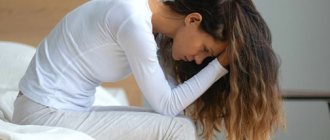Headache in the temple area bothers people of all ages. Some people experience headaches in the left temple or the right, while others suffer from pain in both temples. At the Yusupov Hospital, doctors first use a comprehensive examination to determine the cause of the headache in the temple. Treatment is prescribed depending on the type of pain.
Neurologists, therapists, and oncologists collectively establish a diagnosis and develop patient management tactics. Professors and doctors of the highest category use innovative methods of headache therapy. The medical staff is attentive to the wishes of patients. Psychotherapists provide support to patients with unstable emotional states.
The main causes of pain in the temples
Headache in the right or left temple can be caused by various reasons. It can have a pulsating, pressing character, and less often it can be cutting. A severe aching headache in the temple area often occurs in the morning, which forces the patient to wake up before the alarm clock.
Attacks of headaches in the temples come unexpectedly. If you have a headache in the temporal region, you should immediately contact a therapist at the Yusupov Hospital. He will conduct an initial examination and prescribe an examination. After receiving the research results, the therapist refers the patient to a neurologist, cardiologist or oncologist. If necessary, patients undergo a complex examination and receive consultations from leading specialists from partner clinics.
The most common cause of frequent headaches in the temples is considered to be pressure drop. Seizures can occur due to some disease. There are more than two hundred main causes that can cause headaches in the temples. The most common causes of temporal headaches include:
- disruption of the circulatory system;
- viral and bacterial diseases;
- age-related changes in the body;
- intoxication;
- trigeminal nerve entrapment;
- hormonal dysfunction;
- carious teeth.
It is worth noting that absolutely any pain that is felt in the facial area can provoke the appearance of temporal pain. The true cause of a headache is difficult to identify. Constant headaches in the temples and forehead often bother people who lead a busy lifestyle, get tired, and get little rest.
Treatment
Before starting treatment, you must visit a neurologist, ophthalmologist and therapist. In some cases, you need to contact an infectious disease specialist. Since all doctors unanimously insist that headaches should not be tolerated under any circumstances, you need to take one of the following medications:
- Citramon;
- Farmadol;
- No-shpa;
- Aspirin.
Even if a strong pulsation is felt, the dosage of the above medications cannot be exceeded, since the body will not receive any benefit. After taking the tablet, you need to lie down in silence, because any physical activity leads to a significant increase in pain.
After the doctor has found out the cause of the throbbing pain in the left side of the head, right or back of the head, the patient, in addition to treatment, needs to carry out the following procedures to normalize the body’s condition:
- Perform a warming massage in order to warm up the blood vessels and improve the condition of osteochondrosis and neuralgia. In addition to massage, manual therapy will help improve your well-being.
- A soft and gentle massage will alleviate the condition of intracranial hypertension.
- Japanese acupressure will improve your well-being for various types of pain.
- Regularly measuring blood pressure and bringing it back to normal in a timely manner will help eliminate throbbing pain.
- Physiotherapy will be appropriate for osteochondrosis, neuralgia, increased intracranial pressure and various vascular changes.
- Doctors prescribe physical therapy for all types of throbbing pain.
- Surgery is inevitable for tumors and other serious diseases.
As you can see, throbbing pain in the head is a symptom of many diseases. Therefore, you must definitely consult with a specialist or call an ambulance, because home methods can only get rid of mild pain.
Types of pain in the temples
Any headache in the temples and eyes is characterized by sharpness and suddenness. If the pain syndrome occurs due to overwork or emotional turmoil, the duration of a temporal headache can be 30 minutes or can last 24 hours. If a throbbing headache in the temples occurs in the morning, it can be assumed that its cause is vascular disorders. This pain is accompanied by general weakness, nausea, and tinnitus.
Headache in the temple area due to trauma can manifest itself in different ways: pulsation in the temples, movement of the source of pain from the temporal lobe to the occipital lobe. If appropriate measures are not taken, acute pain can become chronic.
For persistent headaches in the temples, the causes of which are unknown, doctors recommend that the patient keep a diary. It should note the number and nature of headaches and how they are relieved. Thanks to these records, it will be easier for a specialist to get a picture of the course of the disease.
How to get rid of pain in the head and temples
If a severe headache in the temples occurs at home, you can try to get rid of it without resorting to drug treatment. The choice of a method to reduce temporal pain should be approached carefully. You can do a head massage yourself. Find a comfortable position and start massaging your head with your fingertips. If a headache occurs in the right temple, start making massage movements on the right side of the head, if in the left - on the left. Then run your fingers all over your head, including the temporal, occipital, and frontal areas. When you finish the massage, remain in a relaxed state for a few minutes.
Temporal headaches may go away after taking a warm shower. The patient's blood circulation to the brain improves, which allows him to get rid of headaches. The bath relaxes, which will also help relieve pain. Walking in the fresh air for half an hour can reduce headaches in the temples, which are caused by migraines. If, after attempts, the headache in the temples does not go away, contact the Yusupov Hospital.
Diagnostic methods
Signs such as headache and nausea require evaluation if they occur regularly. The Clinical Brain Institute has all the conditions for a full examination of patients with similar symptoms. The first stage is an examination by a neurologist, during which reflexes are checked and a preliminary diagnosis is made. To obtain an accurate picture, additional examinations are required, which may include:
- blood tests will allow you to determine the presence of an inflammatory process, pathogens of bacterial diseases, antibodies to viral infections;
- ultrasound diagnostics of the vessels of the head and neck - is carried out with the addition of a contrast agent, as a result of which areas with insufficient blood supply can be detected;
- CT and MRI are techniques that make it possible to obtain a three-dimensional image of any part of the brain and are often prescribed in the diagnosis of tumors.
The Clinical Brain Institute uses individual diagnostic programs. They will only include those tools that are shown in each individual case. The Institute has modern equipment; its use allows obtaining the most accurate data in a short time.
Non-drug methods for treating temple headaches
Non-pharmacological treatment methods used by specialists at the Yusupov Hospital rehabilitation clinic are aimed at the main mechanisms involved in the formation of headaches. Among them, the leading ones are psychological factors (acute or chronic emotional stress), and muscle tension - myofascial, muscular-tonic, syndromes with the formation of trigger pain points.
The criteria for the use of non-drug treatments are:
- insufficient effectiveness of drug therapy;
- individual intolerance to drugs and or the occurrence of allergic manifestations when taking pharmacological agents;
- the patient’s tendency to become addicted and dependent when taking antidepressants and tranquilizers, which are widely used in the treatment of pain in the temporal region;
- development of abusive headaches with long-term use of analgesics in large doses;
- no contraindications to the use of non-pharmacological methods.
Pain is always a mental phenomenon. The longer and stronger the pain, the more often it is combined with anxious, depressive, hypochondriacal reactions, which can be primary or secondary. The duration and degree of pain affect the patient’s well-being and behavior. Under the influence of pain, personality traits, attitudes towards the world around us, ourselves, and the future change. Psychological correction carried out by rehabilitation clinic specialists is aimed at changing these negative influences, at the following points:
- improved personality functioning;
- correction of the patient’s experiences associated with the presence of constant long-term or paroxysmal recurring temporal headaches;
- elimination of existing emotional disorders.
Doctors at the Yusupov Hospital begin psychological correction from the very first conversation with the patient. The patient is given hope for improvement, anxiety is reduced, and he is encouraged to recover. In addition to an explanatory conversation, psychologists are in a state of hypnotic sleep.
Autogenic training includes:
- relaxation of skeletal muscles;
- regulation of regional heart rate, vascular tone, depth and frequency of breathing;
- mental relaxation through specially selected verbal formulas.
Breathing-relaxation therapy combines elements of mental and muscle relaxation with excursions of the chest in an inhalation-exhalation rhythm. Acupuncture is based on stimulation of strictly defined areas of the skin and subcutaneous tissue in the area of biologically active points. Postisometric relaxation is a technical type of manual therapy. It is used to induce muscle relaxation and pain relief.
Biofeedback is a method as close as possible to testing physiological functions. It differs from others by actively involving the patient himself in the treatment process. The method is based on biological control of physiological functions.
Light therapy is a method of exposure to bright white light. Through the retina, hypothalamus, and pineal gland, it affects circadian rhythms, the activity of melatonin receptors located outside the pineal gland, nonspecific brain systems, and changes endocrine, mental, and motor functions.
Prevention
All preventive measures are aimed at preventing vascular diseases, diseases of the brain and hearing organs. To prevent hypertension, hypoxia, atherosclerosis and other diseases, it is important to give up bad habits, eat right, and maintain normal physical activity, since a sedentary lifestyle negatively affects the functioning of the cardiovascular system.
If work involves high noise levels, earplugs should be used to protect your hearing.
It is also necessary to avoid falls, stress, and exposure to high-level noise, which can cause damage to the eardrum or auditory neuritis. If you have any health problems, you should immediately go to the hospital.
Drug treatment of temporal headaches
When choosing a treatment method for headaches in the temporal region, doctors at the Yusupov Hospital take into account the reason why it occurs. Treatment for tension headaches includes relief of painful episodes and preventative treatment.
In order to interrupt an attack of headache in the temples, simple analgesics and non-steroidal anti-inflammatory drugs are prescribed. Treatment with these drugs should be used when the frequency of attacks is no more than twice a week. The use of simple analgesics should not exceed 14 days per month. The use of any medications for pain relief is monitored by keeping a diary. In patients with chronic headaches and comorbid depression and anxiety, simple analgesics are usually ineffective, and excessive use of nonsteroidal anti-inflammatory drugs can lead to the development of drug dependence.
Patients are prescribed ibuprofen at a dose of 400 mg. It has the least potential to cause gastrointestinal complications. Frequent use of paracetamol in large doses can cause liver damage.
Preventive therapy is carried out for patients with chronic tension headaches. Antidepressants are most often used to prevent pain in the temples. Their effect is due to their own analgesic effect due to increased activity of descending analgesics. The analgesic effect of antidepressants occurs earlier than the antidepressant effect itself and when using smaller doses. The drug of first choice is amitriptyline. Other tricyclic and tetracyclic antidepressants, maprotiline, clomipramine, and mianserin, are also used.
For severe headaches in the temporal region, you can take a simple analgesic or ibuprofen. If the pain does not go away, seek specialized medical help by calling the Yusupov Hospital.
